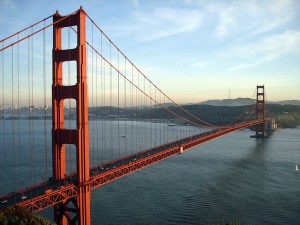OPINION: Why the Plastic Bag Ban Makes No Sense
It’s starting to feel a lot like San Francisco around here.
Alright, so the weather’s a bit warmer, the people a few shades darker (naturally, mind you), and the smooth jazz/poetry scene a bit less crowded.
But for what we lack in sourdough, we make up in half-baked legislation.
Back in January of 2012, the Hawaii County Council voted 5-3 to ban the use of plastic bags by retailers. Councilmen Onishi, Ikeda, and Yoshimoto voiced opposition to the measure, while the remaining council members voted in favor (with Chairman Yagong excusing himself due to a potential conflict of interest).
The task of drafting the rules to enforce the ban was left to the Department of Environmental Management (DEM), who recently released their draft version of them. With public input still being taken before the rules go into effect in January of 2013, it’s worth taking a moment to pick through the issue.
Plastic: Poison or Practical?
When environmentalists conjure images of cuddly critters asphyxiating in say, packaging from Arby’s, they’re not lying to you. These things do happen.
But before we resign ourselves to leaking paper bags full of beef-n-cheddar, it’s worth understanding just how sinfully we blight the earth when we allow the presence of plastic baggies at our registers.
To better understand this, let’s take a brief trip back to the Bay Area. Specifically, to glance at the state of California’s 2008 report on solid waste. The report estimated that plastic bags accounted for a whopping 0.3% of the state’s solid waste stream. By comparison, the remainder of plastic products (including garbage bags, films and containers) accounted for roughly 30 times more junk, measuring in at over 9% of the state’s refuse.
Banning plastic bags here in Hawaii may be less about “making a difference” and more about fulfilling a false sense of accomplishment.
If the Hawaii County Council were really focused on sustainability and a clean environment, they would have kept their attention on more potent issues.
Our East Hawaii landfill is overflowing, and despite the county already facing challenges keeping waste water toxicity within acceptable levels, the council has been busy arguing over where to park Hilo’s refuse (after trucking waste across the island proved unpopular, they chose…Hilo.)
To boot, our county government has wasted years getting a $9 million sort station up and running that by some estimates, could capture up to 70% of the rubbish that would otherwise end up in landfills.
Petroleum-Based Policing
Call them the “Bag Boys” (or “Bag Ladies” if you want gender-precision.)
It’s an appropriate term when describing the quasi-law enforcement duties the DEM takes on once the bag ban takes effect in January of next year.
After a one year grace period where plastic bags must be sold if they are to be used at checkout, it will be up to the director of the DEM (or his/her appointed crusaders) to enforce the rules with local businesses.
If a proprietor is caught peddling contraband packaging, they will first be issued a warning. If repeat offenses occur, the owner will face fines that steadily increase from $250 per day to $1,000 per day for each recurring violation.
How the DEM would determine the number of violations at say, a liquor store without staking out the parking lot is unclear. Short of a sudden infusion of federally-funded aerial drones, enforcement is going to be sparse, and very selective.
Apart from expecting way too much out of the DEM itself, the bag ban also does a nifty job of setting the department up for a lawsuit.
Under the draft rules, the director of the DEM may waive the fines in whole or in part after a written request by business owners. This arbitrary system of appeal makes the director of the DEM both sheriff and judge, allowing very subjective decision making over who actually gets slapped with a fine, and who doesn’t.
Even a hint of bias under this kind of system will guarantee the county ends up defending itself in court (or at least paying out a few settlements.) Trial lawyers, rejoice!
Rules, Rules, …
Before we give in to all this and commit to a life of canvas sacks, let’s return for a moment to the purpose of the law: to keep plastic bags out of our environment.
The bag ban (as written) allows political asylum for quite a few forms of packaging. Namely, just about anything plastic that would typically go into the contraband baggies.
Everything from produce bags and bread bags to cookies and chips will be allowed, as will handle-less versions of packaging for jewelry, pills, and hardware parts, just to name a few. Paper bags on the other hand, despite requiring more energy to produce, will of course be allowed.
Oh, and in case you doubted that these rules were designed to specifically target businesses, take heart. Nonprofit organizations will be completely exempt from all of this.
Hawaii businesses, for their part, have actually been largely open to some form of regulation on plastic packaging, with many pushing for a state-wide fee on plastic bags that would limit their use, but allow them when customers felt it necessary.
Instead, with bag bans of varying degrees on every island, commerce grows increasingly complex and inconvenient.
With our state so dependent on tourists (who are usually focused on buying flip flops, as opposed to canvas sacks), it’s important that we continue to push for statewide legislation to address the issue of plastic packaging in a sensible and uniform fashion.
In the meantime, any lawmakers seemingly jealous of San Francisco’s trendy, ban-happy nanny culture should take heart. Direct flights have never been more convenient.
















